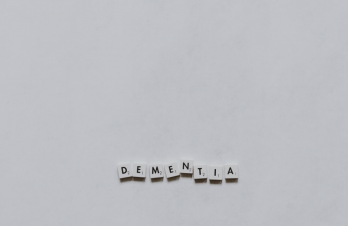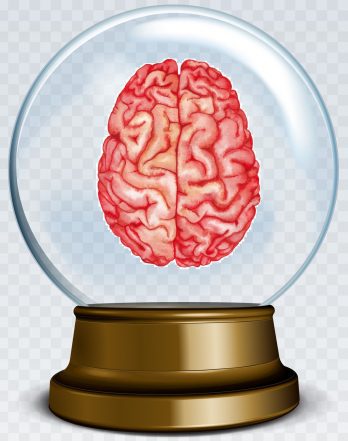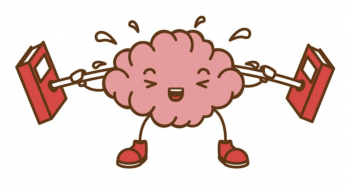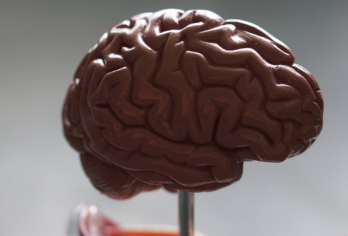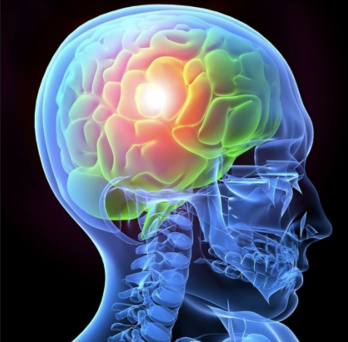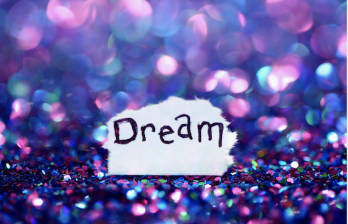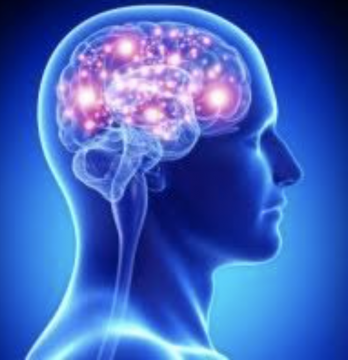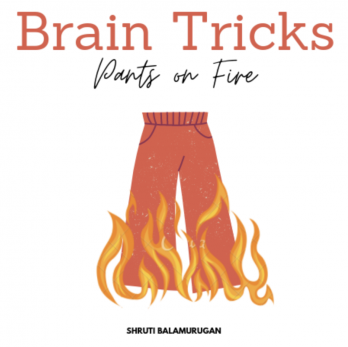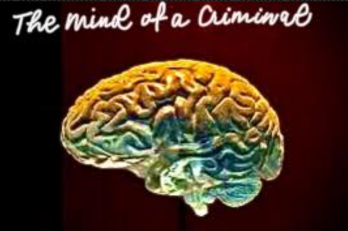Authors: Sahit Mamidipaka and Shruti Balamurugan
On January 13th of 1982, Air Florida Flight 90 crashed into the 14th Street Bridge, plummeting into the icy-cold Potomac River just a few miles from the White House. The impact of the collision killed 73 people, leaving only 6 survivors struggling to survive as the military and surrounding civilians attempted to rescue them. When the rescue chopper arrived, Arland D. Williams, one of the six survivors, unselfishly passed the rope to the other survivors three times, putting their lives above his own. Sadly, he didn’t make it and drowned in the icy depths.
And something just as unselfish and inspiring occurred on January 2nd of 2007. Commemorated as the “New York City Subway Hero,” Wesley Autrey, a 50-year old construction worker at the time, performed an unselfish, heroic act by leaping onto the tracks of a subway rail to rescue a young man who had convulsed and fallen in. With no time to think, Autrey sprang into action, leaving his two daughters on the platform, and pressed his body against the fallen man’s as the train went over their heads, failing to brake in time. Thankfully, both men survived and made it out with very minor injuries.
The actions of Williams and Autrey are honored as valiant, altruistic acts. But what is altruism, what motivates people to perform such acts, and what is the science behind it?
Altruism, simply put, is the unselfish act of helping someone out of concern for their welfare and wellbeing, often at a cost to oneself. Altruistic acts are characterized as actions that aren’t motivated by any form of personal gain, duty, responsibility, loyalty, or any other such reason. The act is performed purely to help someone else out of the good of your heart. There are no expectations of rewards (prize money, awards) or ulterior motives (wanting to be seen as a hero or famous).
The term “altruism” was first coined by the French Philosopher Auguste Comte to encapsulate his vision for morally putting the needs of others before one’s interests. He constructed the word from the Latin “alteri”, meaning “others”, and since then the word has been interpreted and defined in many ways- including both the ulterior and non-ulterior senses of the word. Auguste Comte’s time has come and gone, but the conundrum that his concept has caused still ripples throughout society today.
Now, if this seems pretty idealistic, superhero-esque, that’s because it is. Or at least, that’s the debate that rocks psychology. From an evolutionary point of view, there is no logical or rational reason for a person to help someone else, especially by risking their life or a similar personal cost. Thomas Hobbes wrote in Leviathan that humans are inherently selfish, and all altruistic acts secretly had some self-interest at heart. The famous 18th-century philosophers David Hume and Jean Jacques Rousseau, argue the opposite.
So are some people really filled with such a selfless, make-the-world-a-better-place type of attitude?
Well, there are essentially two perspectives on altruistic acts: self-interest (egoistic) and selfless (altruistic).
Let’s delve into both:
The egoistic perspective, defined by Psychological Egoism and rooted in the Theory of Universal Egoism, states that every action has an underlying self-interested or self-benefiting motive that drives the action itself. And this isn’t necessarily always explicit or conscious. Within the realm of altruistic acts, the egoistic perspective argues that we help others not because we are innately selfless, good people, but because we have something to gain from it (could be subconscious, shaping our behavior without us being aware of it). For instance, we “selflessly” help a stranger because the action makes us feel good about ourselves, or increases our self-esteem and self-image, or impresses those around us, filling our need for attention or respect, or simply because we want to gain the person’s favor for future purposes.
From this perspective, there is no true altruistic act in the world since everything can be defined as having an underlying, self-interested motive. And the logical fallacy that courses this perspective is that it is unfalsifiable. It is merely an empirical statement because you can’t ever disprove that someone didn’t act for self-interested motives, especially if they aren’t even consciously aware of it.
On the other side of the coin, we have the altruistic perspective, which is shaped by the philosophical/ethical doctrine of moral or pure altruism. In moral/pure altruism, only a single motive exists and drives the action—the welfare of the other person. Pure altruistic acts are driven by a person’s internal, selfless values and principles to do good and benefit others, even if it’s risky or comes at a personal cost. This remains more of a philosophical concept than a psychological one.
It’s unlikely that Auguste Comte was expecting such an age-old debate about altruism to rise when he first conjured the idea of it- but since his simple definition was created there have been philosophical, political and biological arguments on whether humans are naturally selfish or unselfish that continue today, as well as a hundred different takes on the meaning of altruism and the types of actions that fall under the word.
Psychologists have found there to be many actions that fall under the term “altruism”, categorizing them into three distinct types.
1. Genetic Altruism – In this type of altruism, people engage in altruistic acts that explicitly benefit family members, such as when parents make millions of sacrifices for their children’s happiness and future. From an evolutionary standpoint, genetic altruism makes the most sense. Evolutionary theorists maintain that we essentially focus on the genes over the person itself. By helping our family, people who share our pool of genes, we are increasing their chances of survival and thus, ensuring there is a greater chance for the genes to be passed down in the future. This is also known as kin altruism or inclusive fitness theory.
2. Reciprocal Altruism – Reciprocal altruism involves an expectation that others will eventually offer their help in return if you help them now. For instance, you help your classmate with a problem today, assuming that they will one day reciprocate your act by helping you with something else. But why would we selflessly aid a stranger with whom we don’t share much genetic material? Evolutionary biologists argue—it does. By helping a stranger in exchange for future mutual aid, we increase the chances and possibilities that we or our kin receive the benefit in the future. This concept is mathematically established through a broad field known as game theory. So by helping someone, you increase your possibilities for future reciprocal aid when needed for yourself and your genetic family.
3. Group-selected Altruism – As the name indicates, in this type of altruism, people engage in altruistic acts for only people within their “group,” which may be based on familiarity, friendship, gender, age, interests, hobbies, or virtually anything else that unites a group. People feel loyal and obligated to their group (akin to a social family) and thus perform selfless acts for people within their group.
But with all the theoretical talk about what altruism really is, and how it is defined, another topic entirely is why people decide act altruistically. After all, one of the most inquisitive questions psychology strives to answer is why we do what we do. What drives our actions? What motivates us to be altruistic (if we assume such an act exists, and not everything is egoistic). Scientists have come up with a couple explanations, but these are just the beginning.
1. Evolution/Kin Selection – As mentioned in previous paragraphs, evolutionary scientists believe helping those who share your genes increases their chance of survival in the future, and thus passing down their genes in the upcoming generations and pass on the lineage. Thus, evolution has made family-based altruistic acts a part of our instincts and nature.
2. Reward Center – Neurobiologists have discovered that when people act altruistically, the reward centers of their brains become more active, supplying them with a sense of pleasure and contentment. Participating in altruistic, compassionate behaviors activates these pleasure centers in our brains and the positive feelings that result then reinforce our altruistic behaviors, leading to a cycle.
3. Environment – Altruistic acts fall under the broader umbrella of prosocial behavior—socially conforming and accepted behaviors intended to help other people. And a ton of research suggests that prosocial behavior has a nurture-based effect. The environment you inhabit, the social interactions you have, and what you observe others do have profound effects on learning and participating in prosocial behaviors, such as altruism. The environment and social modeling, originating from Albert Bandura, have significant effects on prosocial behaviors and altruism.
4. Empathy – Centered around the empathy-altruism hypothesis, people who feel empathetic towards the pain or distress the person in need is in are more likely to engage in altruistic behaviors. Neurobiology research also reveals that mirror neurons allow us to feel and “mirror” the feelings and emotions of those around us. When we see someone in need, we naturally share some of the pain they are undergoing, feel it internally, and this acts as a motivator to participate in altruistic actions. The negative-state relief model affirms that altruistic acts help alleviate the negative feelings we experience when we see someone in distress or pain. We experience negative emotions when we see someone suffering, and we feel better (by reducing these negative emotions) by helping them.
5. Inner Cognitive Incentives – We often help others “selflessly” because it makes us feel better about ourselves. Essentially—acting good makes us feel good. An egoist would claim that the act isn’t truly altruistic since there is an incentive to make ourselves feel better (self-benefiting).
Whatever the reason people decide to help one another out, altruistic acts promote prosocial behavior in society, self-motivated or not. Society runs on the back of people being kind to one another, and without the occasional altruistic act, people would have many more problems than we do today. Thats not the only benefit of promoting kindness in everyday life, however. Altruistic acts committed can bring about many benefits, both on an individual scale and a large one.
1. Better Physical Health – First and foremost, an array of research clearly outlines that altruistic acts can not only improve our physical health (ex–reduced stress levels & risk of high blood pressure) but also significantly lower your chances of mortality
2. Increased Happiness – People also tend to feel more satisfied, content, and happier when they engage in prosocial behavior motivated by others’ wellbeing. In fact, a famous research study revealed that people feel happier when they spend money on someone else rather than themselves.
3. Improved Mental Health – Similar to volunteering, engaging in altruism alleviates stress, calms anger, and counteracts anxiety. Moreover, engaging in volunteering and prosocial behaviors can help with depression, increase confidence, and prevent feelings of isolation.
Altruism imbues the person you are assisting and you with joy, peace, and life! Helping someone out helps you out more than you realize.
However, a precautionary note: be wary of being altruistic to such an extent that you are putting yourself in significant and permanent harm or risking your life.
So what does all of this mean? Everyone comes to their own conclusion. Some people believe there is no such thing as altruism or selflessness and see all acts of aid as self-benefitting ruses. Others believe that people are good by nature and are deeply caring and nurturing of others. Philosophical, theological, and even biological debates on Auguste Comte’s vision of altruism have prevailed for centuries- and they don’t look like they’re stopping any time soon. It’s up to the people to research, learn, and form opinions on their own.
Well, here’s ours: regardless of your motives, whether it’s completely idealistic, founded on pure principles, and has no lustre for self-benefit or it’s entirely selfish for reasons like feeling better about yourself or improving your image for the press, a good deed is a good deed in the end. Despite the underlying reason, the outcome is the aid of someone in need. And as such, we ought to focus more on the effects and results of our actions and appreciate the support we can give someone.
So, go out there and be more compassionate, generous, and altruistic! For decades to come, people will still debate the true intentions of Arland Williams and Wesley Autrey, but one thing is certain. Regardless of why they did what they did, real people are alive and living real lives because of their actions.
And that’s all that matters at the end of the day.
Note: In acknowledgment of his bravery and sacrifice, President Reagan recognized Arland Williams as a hero. He may no longer be alive, but by renaming the bridge Air Florida 90 crashed to Arland D. Williams Jr. Memorial Bridge, his actions are memorialized for history.
Sources:
https://www.frontiersin.org/articles/347034
https://brainworldmagazine.com/giving-brain-look-neurology-altruism/

